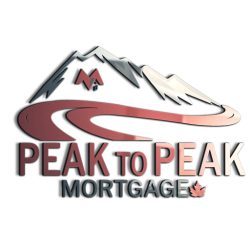The Bank of Canada pays close attention to inflation. The bank defines inflation as: a persistent rise over time in the average price of goods and services – in the “cost of living.” Inflationary pressure is one of the factors the bank takes into consideration when setting the overnight rate or prime rate. The bank reviews and sets the overnight rate every 6 weeks.
Why is it important to keep an eye on inflation? Because it effects our daily living costs and also our interest rates to borrow money. An increase in the demand for goods and services, usually means an increase in the associated costs of providing them. However, another factor that influences inflation, is our Canadian dollar value. The less our dollar is worth, the less purchasing power it has.
The Bank of Canada recognizes 2 kinds of inflation; the CPI or Consumer Price Index, and the CPIX or Core Consumer Price Index.
The CPI is defined as: a measure that tracks movements over time in the level of consumer prices. The CPI compares the retail prices of a representative “shopping basket” of goods and services at two different points in time.
The CPIX is defined as: a measure that strips out eight of the most volatile CPI components (fruit, vegetables, gasoline, fuel oil, natural gas, mortgage interest, intercity transportation, and tobacco products), as well as the effect of changes in indirect taxes on the remaining components.
What is the Bank of Canada’s inflation target? The inflation-control target was set in 1991 and has been renewed five times since then; most recently in November 2011 for five years to the end of 2016. The target aims to keep total CPI inflation at the 2 per cent midpoint of a target range between 1 to 3 per cent over the medium term. Click here for the Bank of Canada’s inflation calculator.
Where is inflation today? As of November 2015, the CPI was 1.4% and the Core CPI was 2.0%. The percentages are expressed as changes over 1 year. The full CPI data from January 2000 to present is here. The Bank of Canada takes several factors into account when they are analyzing inflation. The Bank’s graph on Key Inflation Indicators and the Target Range shows historical data to present day, and the relevant definitions of the various indexes they use.
How does the future look? How will this impact interest rates?
The Canadian economy is stagnant, so what role does inflation play now? Even though our economy is not presently growing, our cost of living is experiencing upward pressure due to our lower dollar. The higher costs of bringing goods into Canada are being passed on to consumers. This makes things a bit complicated for the central bank.
A slowing economy usually dictates the lowering of the overnight rate, or prime rate. However, Canada’s overnight rate is already at a historical low point of 0.50%. In an effort to maintain the Canadian dollar at current levels, the Bank of Canada may not have the ability to lower the rate any further. Even if the bank did lower the overnight rate, Canada’s lenders may not pass on the full discount to borrowers, as we already saw happen in 2015.
Other factors influencing mortgage rates; in an article written by Rob Carrick of the Globe and Mail, he states, “Lenders are facing higher costs for financing mortgages as a result of new mortgage market rules introduced last year by federal regulators. As well, unsettled financial market conditions are forcing lenders to pay higher rates on the money they raise to lend out as mortgages. Canadian consumers are used to mortgage rates that closely track the state of the economy. But today’s mortgage market is more complex than that.”
How does all of this impact you? If you are purchasing a home or investment, or if your mortgage is up for renewal this year, assess your own personal situation, and choose a mortgage term that meets the level of risk you are comfortable with. Mortgage rates have increased over the last couple of months, but they are still at historical lows. The Canadian banks’ current prime rate is 2.70% with 5 year fixed rate mortgage rates ranging from 2.64% to 2.99%. Choosing between a variable and a fixed rate mortgage is a personal choice that is based on what your financing needs are, how long you need the financing, and your risk tolerance.
The Bank of Canada is forecasting that the Canadian economy will be back to full capacity by mid-2017.

